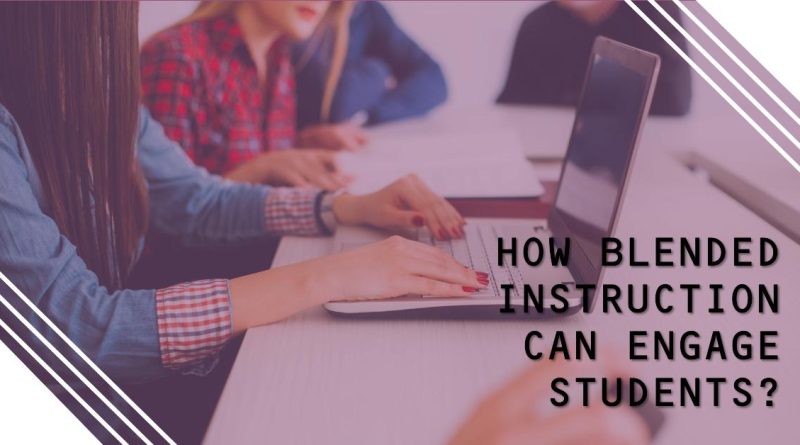How Blended Instruction can Engage Students in Success?
Blended learning has gained a lot of popularity among learners and professionals because of its amazing benefits, it consists of both the benefits of traditional classroom teaching as well as technology and online resources to make learning fun, engaging and contextual. The concept of blended learning keeps on evolving and it is not only used in schools and classrooms but also in corporate offices. In this article, we are going to explore all the aspects of blended learning model highlighting its benefits.
What is the concept of blended learning?
Blended learning combines the two best training environments which are the traditional face-to-face learning model and eLearning to cater for the needs of modern learners. This model has taken learning outside the walls of the classroom making it possible to access resources both on online as well as offline modes. This helps learners engage and adapt themselves in both traditional as well as on computer-based training.
While classroom learning provides the opportunity for immediate face-to-face interaction, online learning allows the learners to at their own pace with interactive tools like videos, games, quizzes, tutorials and much more.
Types of models in Blended learning for learners –
Blended learning has become an increasingly popular way for students of all ages to expand their education. By combining the physical classroom with online digital resources, blended learning offers flexibility that benefits diverse learners. There are a few main models used to structure this hybrid learning approach.
One model is the flipped classroom, where students watch video lectures or engage with other online content at home. Class time is then used for collaborating with teachers and peers on projects, experiments and activities to explore concepts in more depth. Another model is the flexible model, giving students self-paced access to online video lessons and assignments they can complete wherever is most convenient. A third option is the online lab model, with students spending some time in brick-and-mortar computer labs to complete virtual coursework.
No matter the structure, blended learning puts students in control of their schedule while maintaining valuable face-to-face guidance from instructors. The various models provide options to suit different learning preferences, environments and time constraints. Blended learning truly customizes education for each individual student.
-
Face-to-face driver model
It is the closest model to traditional learning as most of the learning takes place in classrooms under the guidance of an instructor where personalized support is offered to learners separately.
-
Flipped model
The next model is Flipped mode where traditional instruction is inverted and learners first come across the instructional content outside of class mostly on online modules, videos, etc, and then they get into class for active learning.
-
Rotational model
As the name of the model suggests, here learners rotate between the two modalities of online activities and face-to-face instruction. This rotation happens in fixed schedules such as daily or weekly or sometimes it is also based on the progress of the learner.
-
Enriched virtue model
This model is basically an online learning experience with some face-to-face sessions in between and most of the learning in this model takes place in a virtual environment but period workshops, classes, assessments, collaborative projects, etc are conducted along with the online model.
-
Flex model
The flex model offers the learners with power and control over their learning as it offers online learning with in-person support whenever the learner needs them. The learners have the power to choose whether they wish to opt for online content and resources or they are okay with face-to-face way.
Benefits for learners of Blended Learning
Blended learning offers students and employees a flexible way to learn that combines the traditional in-person classroom experience with online digital activities and lessons. This hybrid model of education gives learners control over their schedule and how they experience their curriculum.
Through blended learning, students can benefit from interactions with peers and teachers in a physical classroom while also gaining knowledge through online video lessons, quizzes and discussions they can do remotely on their own time. This allows them to learn in the way that works best for their individual learning styles – whether that be in a group setting or independently. They have the freedom to choose to attend lessons face-to-face or participate virtually based on their schedule needs.
For companies, blended learning unlocks opportunities for employees to continuously enhance their skills without disrupting their daily work. Workers can learn new programs, skills and information through online modules and videos on evenings and weekends from the comfort of their own homes. This saves on costs associated with travel and time away from the office for training courses. It maximizes productivity by allowing learning to seamlessly integrate into employees’ routines.
Blended learning is also cost effective for educational institutions by reducing infrastructure requirements compared to entirely online or fully in-person options. It gives flexibility to both students and teachers while maintaining important social interactions and support typically available in traditional classrooms. The hybrid model truly provides the best of both virtual and real-world learning.
Also Read: Best Poses Yoga for Martial Arts – Top Poses to Practice

